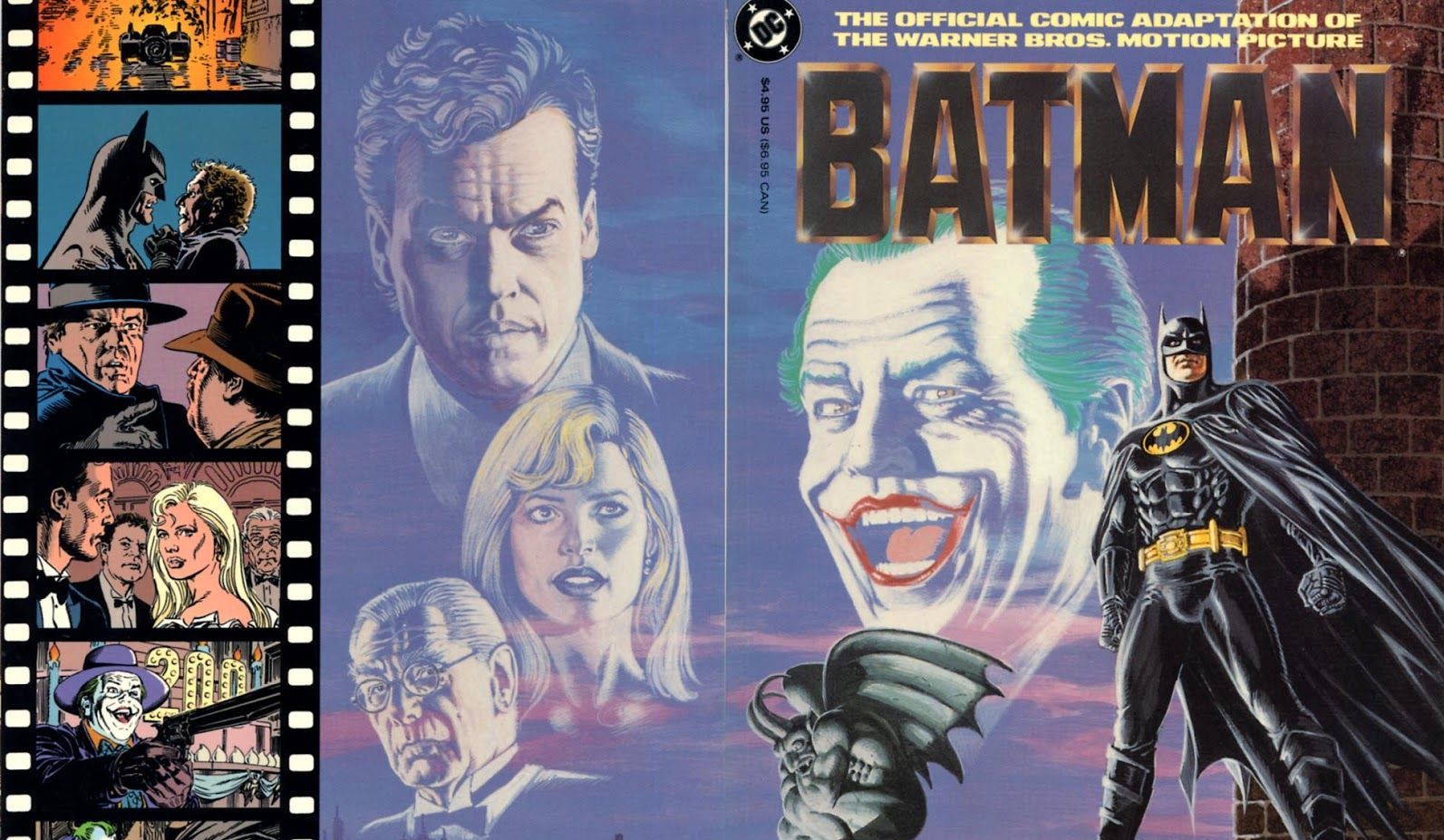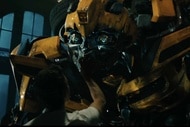Create a free profile to get unlimited access to exclusive videos, sweepstakes, and more!
The complicated story of how Tim Burton's Batman movie became a comic book

When tackling a comic adaptation of a film, you'd think comic book writers and artists might have a fairly easy job. Just copy what's on the screen and in the script, right? It wasn't so for DC comic book creators Denny O'Neil, artist Jerry Ordway and editor Jonathan Peterson when they took on what was to become one of the biggest superhero movies ever, Tim Burton's Batman, in 1989.
Thanks to late script changes, stolen footage, and an impossibly tight deadline, it almost didn't happen. This week, Ordway spoke to SYFY WIRE about the challenges of producing the hit comic book and what Batman's meteoric rise onscreen meant for DC.
Nowadays, superheroes are everywhere, but in the 1980s comic book movies were fairly rare. Superman had delivered a hit for DC and Warner Bros. in 1978 and 1980 but by the middle of the decade, the brand had fizzled. As for Marvel, they'd made two movies by then, a Captain America serial film in 1944 and the infamous Howard the Duck movie in 1986. It was under those conditions that Tim Burton started filming his grittier version of Batman in 1988.
Likewise, the market for comic book adaptations wasn't hot. There had been a few exceptions — Al Williamson and Archie Goodwin producing The Empire Strikes Back for the Star Wars trilogy at Marvel and Goodwin and Walt Simonson's Alien adaptation in the pages of Heavy Metal had been hits — but up to that point they had been fairly limited and mostly treated as throwaway marketing, by fans and creators.
It was only after a visit to the set of Batman in the fall of 1988, that Ordway saw the potential of a comic book adaption of the movie. In the end, Batman: The official comic adaptation of the Warner Bros. motion picture sold hundreds of thousands of copies and opened up a new generation to comic book fans.
In October of 1988, Ordway was a guest at a London Comic Convention, and was lucky enough to get to visit the Batman set at Pinewood Studios outside London. The film had languished in development limbo for 10 years but it was finally underway and the early buzz was good.
"I saw the costumes, the sets, the Batmobile, and was blown away. Filming had not started then, but it was all pretty impressive, the art direction," Ordway tells SYFY WIRE. "There was a buzz surrounding the movie for a few years prior to production as well. I recall publisher Jenette Kahn taking a group of us to see Pee-wee's Big Adventure, because the director, Burton was chosen to helm the Batman film! We were somewhat skeptical, but the various camera shots and score for Pee-wee by Danny Elfman won us over."
When he got back from the UK, Orway rekindled a familiar conversation about comic adaptations with DC Editor Jonathan Peterson.
"He and I saw the potential to try and reach comic stores as well as the newsstand market with a comic that looked like the movie," he says.
True adaptations like that were rare for a few reasons, not the least of which that it was a lot of work. It would take an artist a good amount of time not only to draw the massive storyline, but it would take even more time to get the actors' likenesses just right.
In December of 1989, Batman producer Jon Peters, looking to build up hype for the film, ordered a trailer cut together in time for Christmas — months before Batman’s June 1989 release date. The gamble paid off and within months Batmania had hit and DC had greenlighted Ordway and Peterson's adaptation.
"I remember how huge the teaser trailer was, impact wise, on the comic book community," Ordway says. "The teaser was released with whatever the big Warner Christmas movie was in 1988, and when the Joker slowly turns to the audience with 'Winged freak terrorizes — wait 'til they get a load of me,' we all cheered!"
The only issue now was time. In January, comic book legend Denny O'Neil was tasked with adapting the shooting script, which he revised it several times and delivered to Ordway the following month.
The schedule was a killer and Ordway recalls that, at the start of the project, he and Peterson talked about bringing in Al Williamson on to ink the book.
"He politely declined, as he no doubt had his own trials in drawing the Star Wars adaptations, and he also was just signed exclusively at Marvel Comics," Ordway says. "Without Al, I decided to be a glutton for punishment and ink the comic myself, despite the killer schedule, which was 64 pages, plus two covers, in two and a half months time. It was a pretty grueling, seven days a week schedule, with no flexibility on the deadline. What doesn't kill you only makes you stronger, I say!"
In addition to editing the book, Peterson's job was to collect as much information about the movie as possible, as to inform the comic book. This was made more difficult by the fact that script rewrites were happening on the fly. Still, Peterson started sending little boxes of 8x10 set stills to Ordway for reference.
"A comic is a different beast from a movie," Ordway says. "Copying movie scenes would be pretty boring, because movies are composed for a widescreen ratio, while comics can use any sized panel on a page to make visuals exciting. Being still pictures, comic illustration has to kind of tell that story a couple of dialogue lines per panel, and still look visually exciting."
Working from O'Neil's screenplay adaptation, as well as input from Peterson when he saw that things veered from the movie script during filming, Ordway started by loosely sketching in panels, indicating where the dialogue would go, and then these were sent to the artist who hand-lettered the word balloons, John Costanza.
"He then sent the lettered pages back to me, so that I was able to finish the art, add the likenesses, etc. This approach got the ball rolling, but also stalled when I would actually commit the pages to ink, so we could keep pace with filming, and on set changes," Ordway says.
For example, when Ordway started work in February, the film was halfway done so the creators were confident that the first half of the comic was true to what was filmed. But, around the halfway point, the movie changed, and a horseback sequence was cut and replaced with a whole new set piece.
"We were able to revise our pages as they weren't fully drawn, just pencil sketched," Ordway explains.
As the movie's ending changed and things were moved around and cut out completely, O'Neil was too busy to keep revising the script, so he gave Ordway and Peterson the reins and permission to do whatever it took to ensure the comic and movie were in sync. Ordway explains how much of the later references, after the Joker's arrival onscreen, came in the form of contact prints as well as slides (which are much harder to use as references, on account of being so small), that Peterson smuggled away from set. Together, the pair studied the slides with a magnifying glass, hoping to figure out where the new scenes would go in the film.
"That was quite a monkey wrench to throw into any comic," Ordway says. "When I saw the film at the end of May preview, Jonathan and I were watching it clinically, to see if we got the comic right. When we each saw it when it opened wide in June, we could enjoy it."
For the most part, Batman: The official comic adaptation of the Warner Bros. motion picture was true to the film, though there are several hard-to-miss discrepancies including when Batman utters "I am the night" instead of the now-famous "I am Batman" in the opening sequence.
Another moment that was different in the comic was the ending, which had been rewritten. In Ordway and O'Neil's adaptation, there's a scene which had ultimately been cut from the movie, when reporter Alexander Knox wearing the Bat-cape at then end, allowing Batman and Vicki Vale to escape.
Other small changes were made, scenes were shortened, and all the while Ordway and Peterson pushed through, hoping they were on track. Just before Batman was released, as posters, t-shirts, and other merch were being pushed out, Warner Brothers made the decision to hold the comic book for a week. According to Ordway, they still weren't sure about the film's prospects and wanted to hedge their bets. In the end, it was a wasted worry, as the film and the comic book sold incredibly well.
"I know Warner was skittish until it opened. One of the cool things DC circulation department arranged was to sell the movie comic in the theaters, in its own counter display!" he says. "So, when the film made a record amount in that first week, everyone was happy. DC was vindicated, and finally out from under the pop culture shadow of the 1966 tv series."
DC produced a "deluxe" squarebound edition with a cardstock painted cover, to sell in comic shops and the movie theaters, as well as a standard, cheaper comic version for newsstands and drugstores. Between the two editions, the comic book sold over 400,000 copies worldwide.
"People loved the movie, and they seemed to love that the comic looked like the movie, with actor likenesses," Ordway says. "I got a lot of compliments and it was the talk of the summer."
You can check out Ordway's most recent work, a 30-page Marvel one-shot with Roy Thomas called Captain America: The Bahamas Triangle in July as part of Marvel's 80th anniversary publishing event.

































